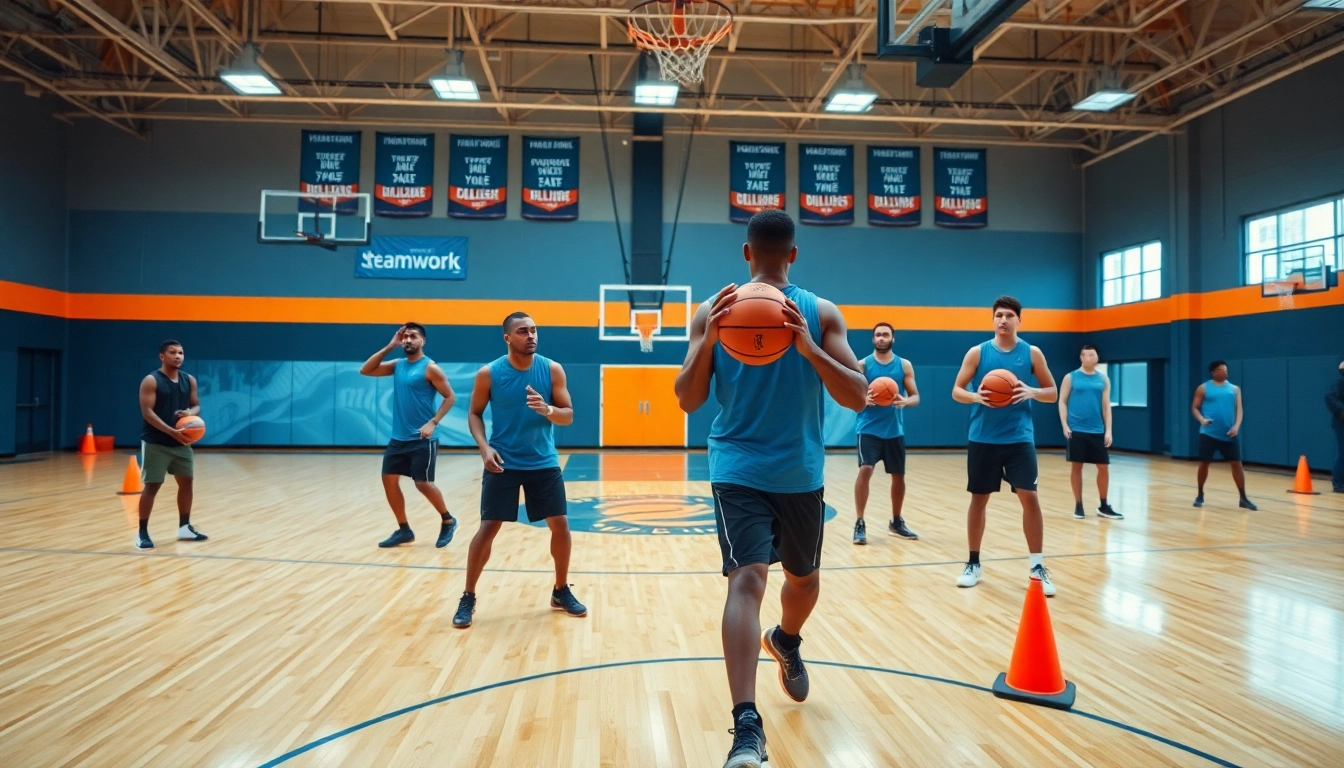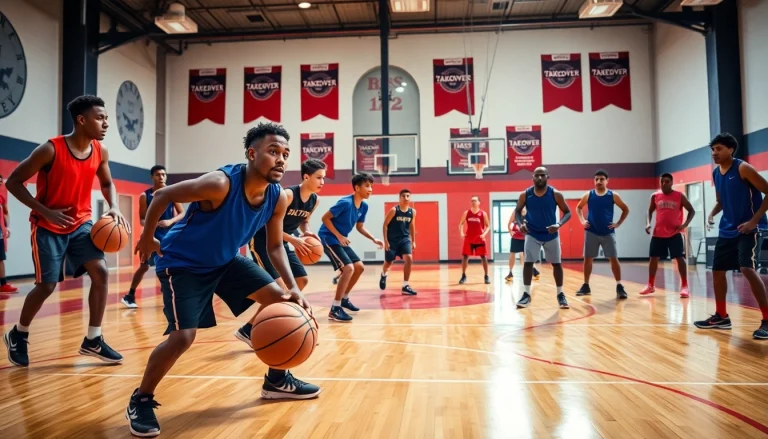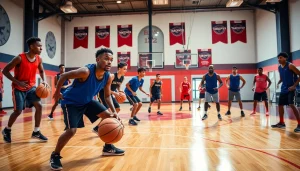Understanding the Best Basketball Training Programs
Basketball is a sport that combines athleticism, strategy, and skill. As with any sport, the quality of training can drastically influence a player’s performance. Finding the best basketball training programs is essential for players looking to improve their game, whether they’re beginners or seasoned athletes. But what does it mean to have a quality training program?
What Defines Quality Basketball Training?
Quality basketball training is defined by various factors that ensure the training is beneficial and effective. First, a well-structured program provides a comprehensive approach to skill development, addressing both the physical and mental aspects of the game. It should include drills that enhance shooting, passing, ball-handling, and defensive techniques while integrating game-like scenarios that challenge players tactically.
Furthermore, accessibility and personalization play key roles. The best training programs recognize that each athlete has a unique set of strengths and weaknesses, and hence, tailor their approaches accordingly. Graduates of basketball academies often cite the importance of individual feedback and adaptation of drills to suit personal athletic styles.
Key Components of Effective Programs
Effective basketball training programs share several key components:
- Curriculum Structure: A well-defined curriculum that progresses over time, from basic skills to advanced techniques.
- Qualified Coaches: Experienced coaches who have a background in professional play or coaching can provide valuable insights and mentorship.
- Physical Conditioning: Incorporating strength and agility training to enhance overall athleticism, crucial for basketball success.
- Game Strategy: Teaching players to understand game strategies and decision-making skills is vital for on-court performance.
- Mental Training: Including aspects of sports psychology to improve focus, confidence, and resilience during competition.
Benefits of Professional Coaching
Engaging in a professional coaching environment can have a transformative effect on an athlete’s skill set. Professional coaches bring not only technical knowledge but also experience from various levels of play. They can identify flaws in technique that players might overlook and provide strategies to overcome mental blocks. Furthermore, the motivation and accountability that come from working with a coach can drive players to push their limits and reach new performance levels.
Popular Types of Basketball Training Programs
With the growing interest in basketball, a variety of training programs exist to cater to different needs. Here’s a breakdown of some popular types:
Individual vs. Group Training Programs
Individual training programs focus on one-on-one interactions between the coach and the player, allowing for personalized attention and tailored skill development. This format works well for players needing to refine specific skills or overcome particular challenges.
Conversely, group training programs foster a competitive environment. They can enhance players’ ability to perform under pressure while also promoting teamwork and communication skills. Group dynamic can inspire players to give more and helps in building camaraderie among teammates.
Specialized Camp Experiences
Basketball camps vary in focus—from skill development, shooting, and ball-handling to positional camps that specialize in guard or post training. These camps are often short-term intensive training sessions that can provide breakthroughs in skills over a condensed period. Renowned camps like IMG Academy or Pure Sweat offer unique experiences with access to experienced coaches and elite competition.
Online vs. In-Person Training Options
The advent of technology has led to the emergence of online basketball training programs. These programs can range from video tutorials to interactive feedback systems. While online training can be accessible and convenient, in-person training allows for real-time corrections and more immersive learning experiences.
Hybrid models that combine online content with in-person trainers are increasingly popular, giving the best of both worlds to players wanting flexibility and personal touch.
How to Choose the Right Basketball Training Program
Choosing the best program can be daunting given the vast options available. Here are effective strategies to help players make the right choice:
Identifying Your Skill Level and Goals
Understanding where you stand in terms of skills is the first step toward finding the right program. Players should set realistic goals based on their current abilities. For example, a beginner may benefit most from foundational skill development, while an advanced player might seek specialized skills training to elevate their game further.
What to Look for in a Training Facility
When evaluating training facilities, consider factors such as the facility’s condition, availability of equipment, and the coaching staff’s credentials. A reputable program should offer modern training aids like video analysis technology, strength training equipment, and well-maintained courts designed for skill development.
Reading Reviews and Success Stories
Before committing to a training program, it’s crucial to read reviews and testimonials. Successful alumni can provide insights into how the program has helped them and the effectiveness of the coaching staff. Online communities and discussions, such as Reddit threads, can also shed light on both well-regarded and lesser-known programs.
Implementing Skills from Training Programs
Participating in a training program is just the beginning; implementing learned skills consistently is vital for success. Here are methods to effectively integrate skills into regular practice:
Practicing Drills at Home
Practicing drills at home can reinforce learning and technique acquired during training sessions. Simple activities like dribbling drills, shooting routines, and footwork exercises can be done in small spaces. Utilizing resources from training programs, players can create a structured practice schedule to follow at home.
Creating a Development Schedule
Consistency is critical in developing basketball skills. By making a development schedule that aligns practice sessions with training program content, players can ensure they regularly revisit and practice new skills, reinforcing knowledge and building confidence.
Metrics to Measure Improvement
Setting measurable goals allows players to track their progress over time. Metrics can include shooting percentages, dribbling speed, or successful completion of specific drills. Regular self-assessments and feedback from coaches can provide valuable insight into players’ growth.
Success Stories from Top Training Programs
To understand the potential impact of good training programs, let’s explore some inspiring success stories:
Athlete Testimonials and Experiences
Many athletes attribute their success to effective training programs. Testimonials often highlight transformative experiences where dedicated coaching and personalized training plans pushed them beyond their limits.
For instance, elite players often share stories of how initial setbacks were turned into triumphs through perseverance and the right guidance from coaches, influencing their mentality as much as their skill level.
How Training Leads to Competitive Edge
Securing a competitive edge often comes down to the quality of training a player undergoes. Programs that integrate physical, mental, and tactical training can help develop well-rounded athletes capable of success at any level. The difference is most noticeable during high-pressure game situations when players must rely on their training to execute effectively.
Profiles of Notable Alumni from Training Programs
Notable basketball stars have often emerged from renowned training programs. For example, athletes who trained at IMG Academy or through programs run by notable coaches often enter the professional scene with enhanced skill sets, readiness for competition, and a strong work ethic—elements that are deeply cultivated during their training years.








